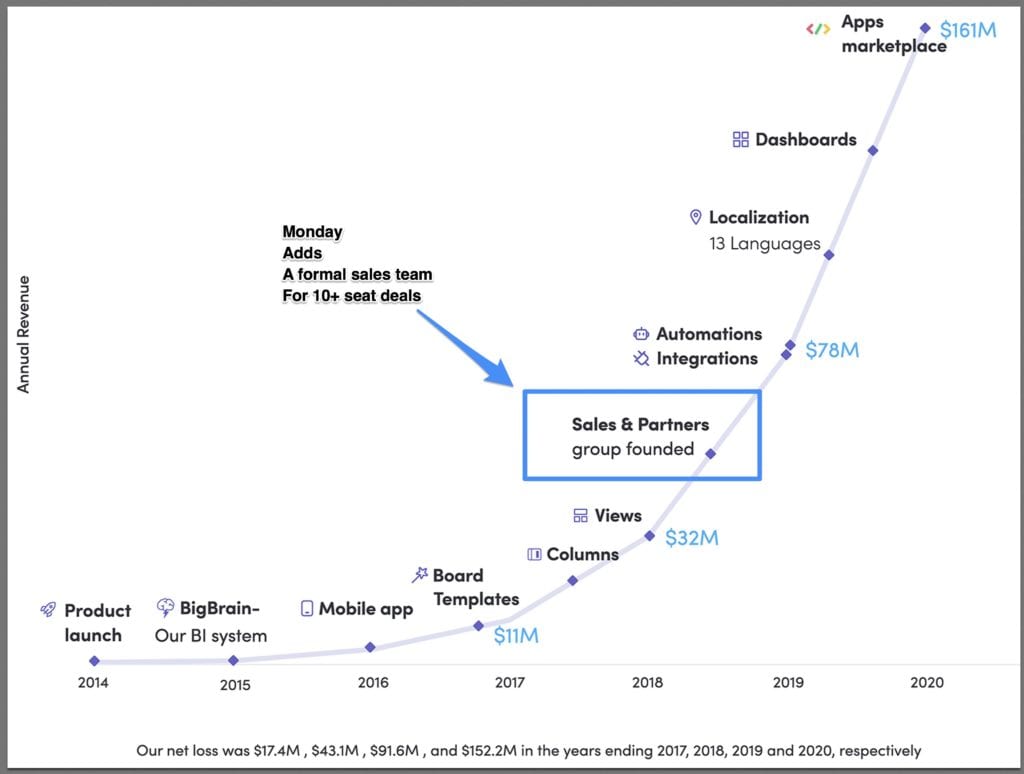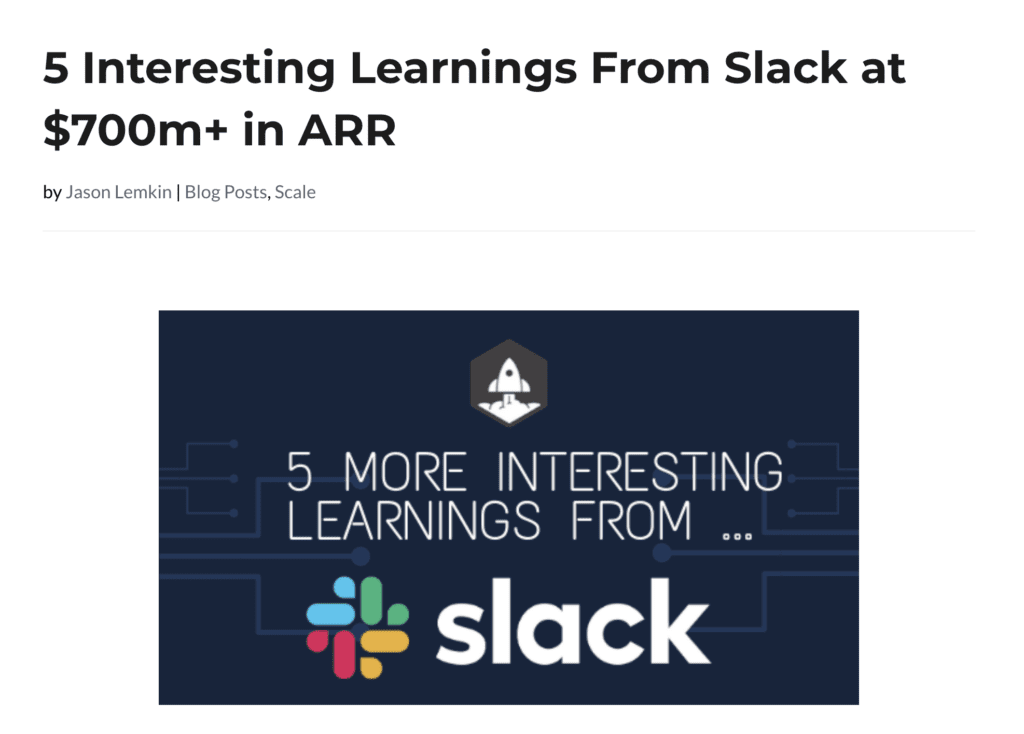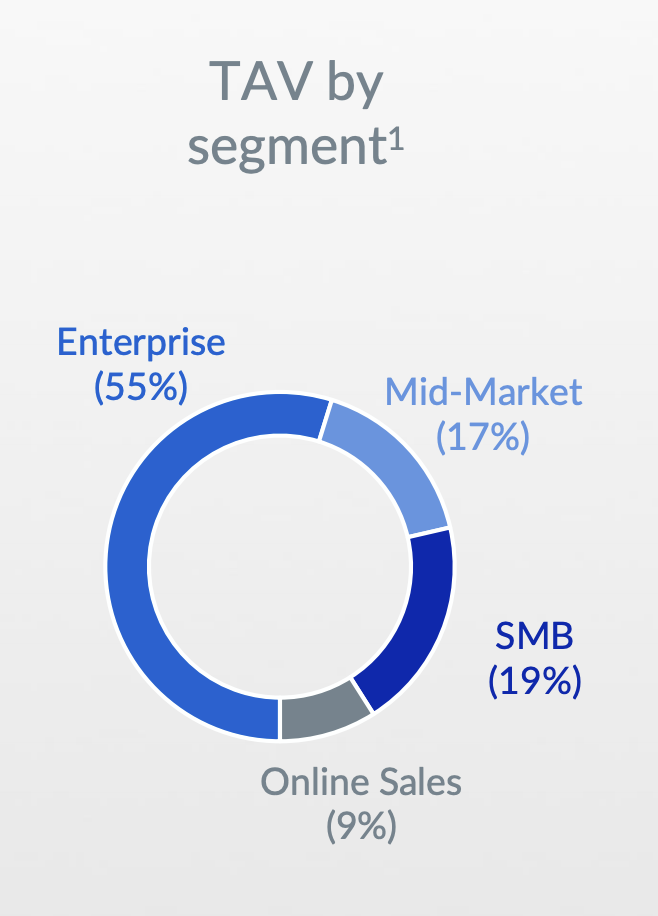99% of PLG companies, from 1999 to 2022:
Year 1: "We'll never have a sales team at all!"
Year 7: "How quickly can we scale an enterprise sales team"@patrickmoran @Calendly pic.twitter.com/z0aczWwKRV
— Jason ✨Be Kind✨ Lemkin (@jasonlk) December 15, 2021
The lure of freemium (like The Force) is strong. No headaches. Customers try and buy all on their own. Like magic. And.
No salespeople.
Well, that can work. For a while. Maybe even forever, if you don’t want to build something really big. But to Go Big, almost everyone in SaaS at least eventually adds a sales team.
Yes, Twilio started off as self-service. But to scale, it quickly added a very effective sales team:
Yes, Atlassian for a long time had almost no “direct” sales team, well after the IPO. But it always had a very large channel (i.e., resellers) that sold its product into the enterprise, and a lot of internal resources that supported the channel. Those channel salespeople aren’t employees, so yes, leaning so heavily on the channel is less common. But it’s just third-party selling instead of first-party.
See more of our discussion with Jay Simons, President of Atlassian, below on just this topic, from the SaaStrAnnual:
Monday.com stayed self-service for the most part — up to $30m-$40m ARR. But after that, the sales and success team fueled faster growth and much, much higher NRR to $240m ARR and beyond. More on that here.
And today, many of its products are now supported by an internal sales team, albeit one that doesn’t discount and more supports deals than negotiates them:
Slack started off with no “outside” sales team. But it too, as it went more and more enterprise, staffed up with a deep and strong one as they crossed $50m ARR. Fast forward to today … and the majority of Slack’s growth is in the enterprise. In big deals. With, and through, a sales team. More on that here:
Dropbox started off with no traditional sales team. Then to sell Dropbox Enterprise, it added several. And Box’s revenues are now ~90% through the sales team, from 0–1% when it started as a pure freemium product (more on that here):
Stripe waited a long time to add a true sales team. But then, as it went more enterprise, it finally did too. :)
What’s also clear here is you don’t need 100% sales-driven revenue to Go Big. “Hybrid” self-serve + sales models can be great for many SaaS and Cloud leaders. The power of PLG is real, especially when combined at scale with sales-led growth. Today, many of Twilio’s bigger customers go through sales, but then a huge amount of the downstream revenue is “automatic” as customers use more. Hence, Twilio has a very high level of sales efficiency (and a relatively small headcount). But there’s still a real sales team there. They just only need to directly touch a subset of the total revenue.
It’s just hard to get past $100m ARR without going upmarket a bit, and closing larger deals. Calendly added a real enterprise sales team around $50m ARR. You might be able to go even further. But it’s the law of large numbers that pushes you to go into bigger and bigger deals. And larger deals require a human touch. That can be done without sales. But if it’s only done with support and Happiness Officers … you close less revenue. More on the math here: Why You Need 50 Million Active Users for Freemium to Actually Work and why salespeople increase revenue here: Curse of the ‘Middlers’: Why Happiness Officers Can’t Stand In for True Sales Professionals
So convergent evolution says anyone trying to cross $100m in ARR or so will eventually add a true sales team. Maybe on Day 0. Maybe on Day 3650. Maybe at $30m-$40m like Monday.com.
Just don’t be totally against it. And if you don’t think you need a sales team now, well great. It’s cheaper without one, no doubt. Just be on the lookout for the moment … when that changes.
(note: an updated SaaStr Classic post)




